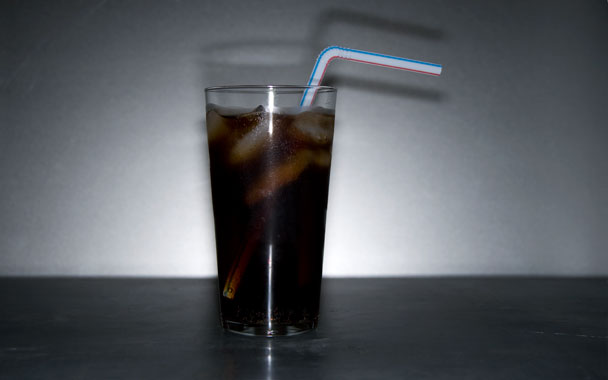Nothing spoils a good marketing campaign as surely as solid, scientific facts. So I imagine the folks over at the Corn Refiners’ Association—who have recently spent a fortune on PR and advertising to convince “moms and healthcare professionals” that high-fructose corn syrup (HFCS) was no better or worse for us nutritionally than sweeteners such as table sugar and honey—were shocked when they opened the latest issue of the Journal of Nutrition.
It contains a paper by a group of researchers at the University of Texas who report that fructose, the primary sugar in HFCS (which finds its way into just about every non-diet soft drink sold), made subjects of a study fatter than glucose, another sugar.
“Our study shows for the first time the surprising speed with which humans make body fat from fructose,” said Elizabeth Parks of the Southwestern Medical Center.
It also may explain why the current obesity epidemic in this country dates back to 1980, the year HFCS entered our diet. Starting from zero, Americans now gulp an average of 66 pounds of the stuff each year.
And it shows.
HOT TOMALLEYS
When it comes to lobster, my partner and I have a Jack Sprat thing going. She loves the tomalley—that green gunk up there in the body cavity. I hate it. But true to the lesson of Mr. and Ms. Sprat, this is a win-win disagreement. She is happy to swap a succulent morsel of her claw meat for my gooey tomalley, and we both smack our lips, grateful for the other’s utter lack of taste.
Of course, I’m right and she’s wrong. And this week, I received official, government vindication for my position. Food and Drug Administration took time out from its never-ending investigation into the salmonella outbreak in tomatoes/jalapenos/serranos to advise consumers against eating American lobster tomalley. It comes as no surprise to me that the disgusting organs can contain dangerous levels of toxins that cause a frightening condition called paralytic shellfish poisoning (PSP), whose symptoms include nausea, vomiting, tingling or burning lips, shortness of breath, slurred speech, and in rare cases even death.
Normally, lobster tomalley does not contain dangerous levels of PSP toxins, which are usually associated with clams, oysters, and other filter-feeders. But a stubborn red tide episode in New England this summer has probably spread the poisons to lobsters, and they concentrate in the tomalley, the organ responsible for removing impurities from the crustaceans’ bodies, much like the liver in higher organisms.
Making a Mint
“Milk and cookies never tasted so sweet,” says the ad from Dairy Queen, featuring a pair of healthy-looking girls clutching the company’s “Blizzard of the Month” for July—the Girl Scouts Thin Mint Cookie Blizzard Treat.
But as the Center for Science in the Public Interest (CSPI) points out, the only thing that’s thin about the ice cream confection is in the name. A large Thin Mint Blizzard weighs more than a pound, packs a whopping 1,080 calories, and contains 31 teaspoons of sugar. For good measure, it supplies 130 percent of the recommended daily intake of saturated fat, with 1.5 grams of trans fat acting as the artery-destroying cherry on top of each of these nutritional nightmares.
“Our partnership with Dairy Queen enables us to reach the public in new and unexpected places,” said Laurel Richie, chief marketing officer of the Girl Scouts of the USA, in a press release. (It also enables her organization to rake in an undisclosed amount of cold cash.)
With go-get-’em attitude like that, Ms. Richie should have no trouble convincing Dairy Queen to pay the Girl Scouts a hefty sum to have a Blizzard embroidered beside the carrots, cheese, milk, bread, and fresh fish on the Food Connection merit badge.




 Pinterest
Pinterest


